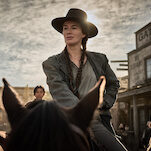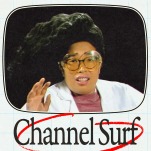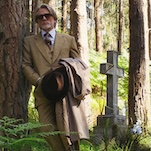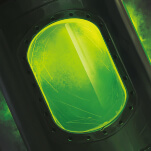Why it took Robert Rodriguez almost a decade to stumble back down the darkened, digital alleys of (Ba)Sin City is anyone’s guess. Perhaps he knew on some level, as the rest of the world soon will, that two hours was all the time worth spending in Frank Miller’s monochromatic sandbox—a place where every element of noir, from its vernacular to its violence, becomes grotesquely exaggerated. And yet here the filmmaker is again, lured back into an underworld of mangled body parts, clichés spouting clichés, and geysers of neon-silver blood spurting across the inky blackness of the night.
But if Sin City hasn’t changed, as just about nothing ever does in the cynical bubble of noir, the real world that spawned it sure has. And what looked radical nine years ago—the marks of vibrant color smeared across a black-and-white metropolis, the sight of slumming movie stars striking dramatic poses against a green screen—now looks almost ordinary. A Dame To Kill For does nothing fresh or innovative with the Sin City template, save for amping up its unreality through the “magic” of 3-D. The dialogue fizzles where it used to pop, sounding like a parody of a parody of Raymond Chandler speak. And the actors, old and new, mostly seem stranded. In just about every way, the film is an inferior sequel—dumber, flatter, lacking even the barbaric extremity of its predecessor. Where’s a flesh-eating Elijah Wood when you need him?
Technically both a sequel and a prequel, Dame employs a Godfather Part II approach, its action unfolding before and after the events of the original. This allows Rodriguez and Miller to pull a Pulp Fiction and resurrect some of their more popular, departed rogues. One of them, naturally, is Marv, the hulking psychopath antihero Mickey Rourke so memorably embodied in the original. Sin City gave Marv a crusade, putting him on a warpath to answers, his rampage a twisted expression of romantic grief. Here, he’s employed mainly as an auxiliary player, as backup; with no real horse in the race, he drops in randomly to hiss a threat or make good on one. It’s the Freddy Krueger effect: menace calcifying into shtick.
Again, there are four stories. Two of them, including the eponymous one, are adapted from old Sin City comics. The other two are Miller originals, both proof that the author’s better years are behind him. All of these yarns feel like leftovers, the B material of the canon. None possess a fraction of the grim humor and warped pathos that pervaded “The Hard Goodbye.” In one fairly pointless misadventure, Joseph Gordon-Levitt plays a cocksure card shark who tests the patience of a powerful man. Another vignette picks back up with Nancy (Jessica Alba), the traumatized exotic dancer of part one, now determined to reinvent herself as an angel of death. Sin City had surprises, a sense of mystery; there was some crude fun in finding out who killed the prostitute with the heart of gold or seeing Nick Stahl’s repulsive human monster reborn as a literal monster. In A Dame To Kill For, plot strands run their expected courses. The closest thing to a shock is finding out that the token femme fatale hasn’t the purest of intentions. No shit, Marlowe.
Not even the high-contrast imagery, placing stark-white objects against deep-black backgrounds, catches the eye like it used to. Having already translated the comic’s pulp panels into some of the most striking shots of his career, Rodriguez seems to have lost his flair for the material; too many action scenes push the cartoon quality past its acceptable limit, bringing to mind Miller’s disastrous The Spirit as often as the first Sin City. (Not for nothing, perhaps, do the two men share a directing credit.) With the novelty of the aesthetic wearing thin, it becomes impossible to ignore the less savory hang-ups of the film’s author—most troublesomely, the stench of misogyny that often characterizes his macho action fantasies. Remarkably, Eva Green is able to lend some dimension to her foul vamp of a character, even as Rodriguez and Miller attempt to reduce her to permanently unclothed eye candy. She is, per the title, the dame worth killing for—and maybe, for those with properly lowered expectations and a few bucks to burn, the one worth returning to Sin City for.









































